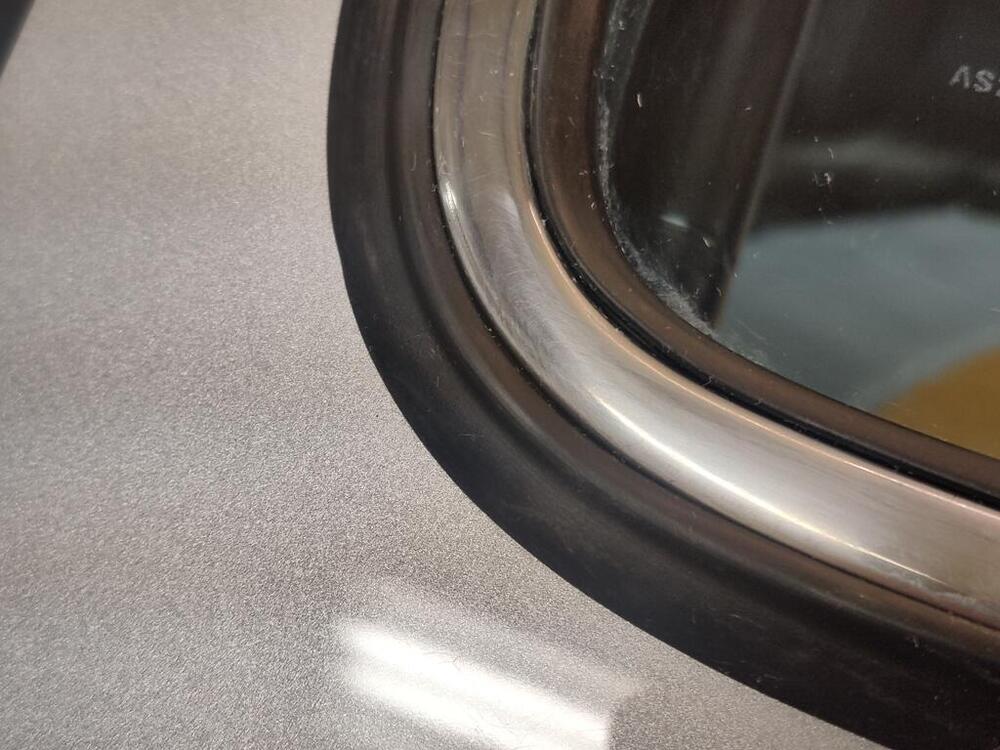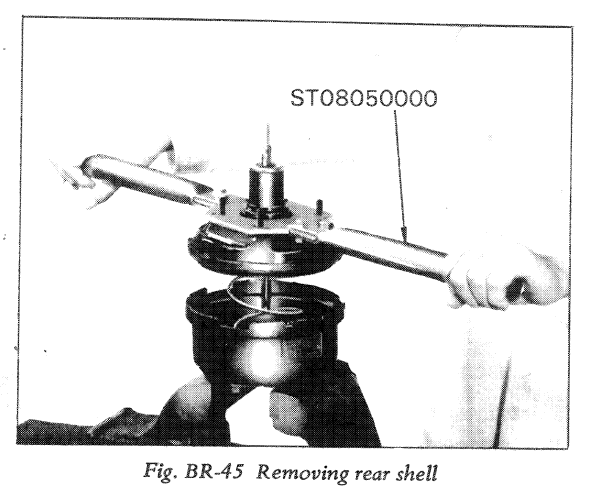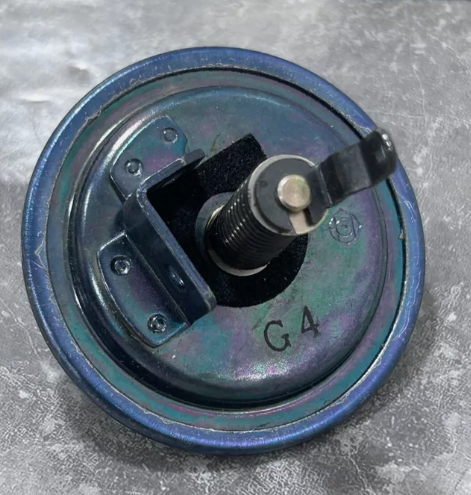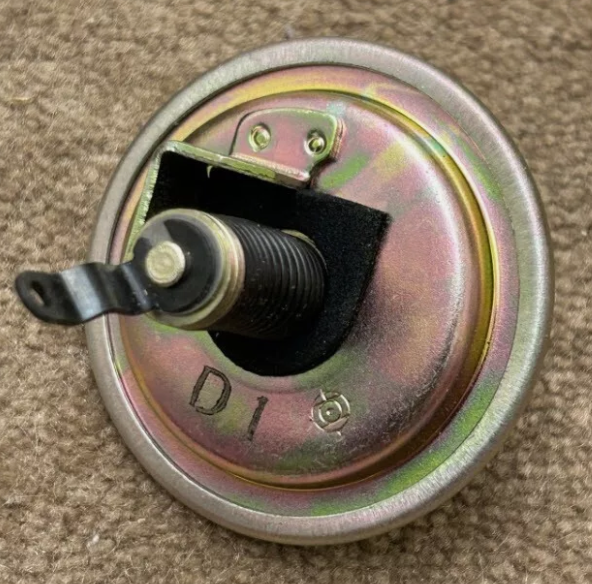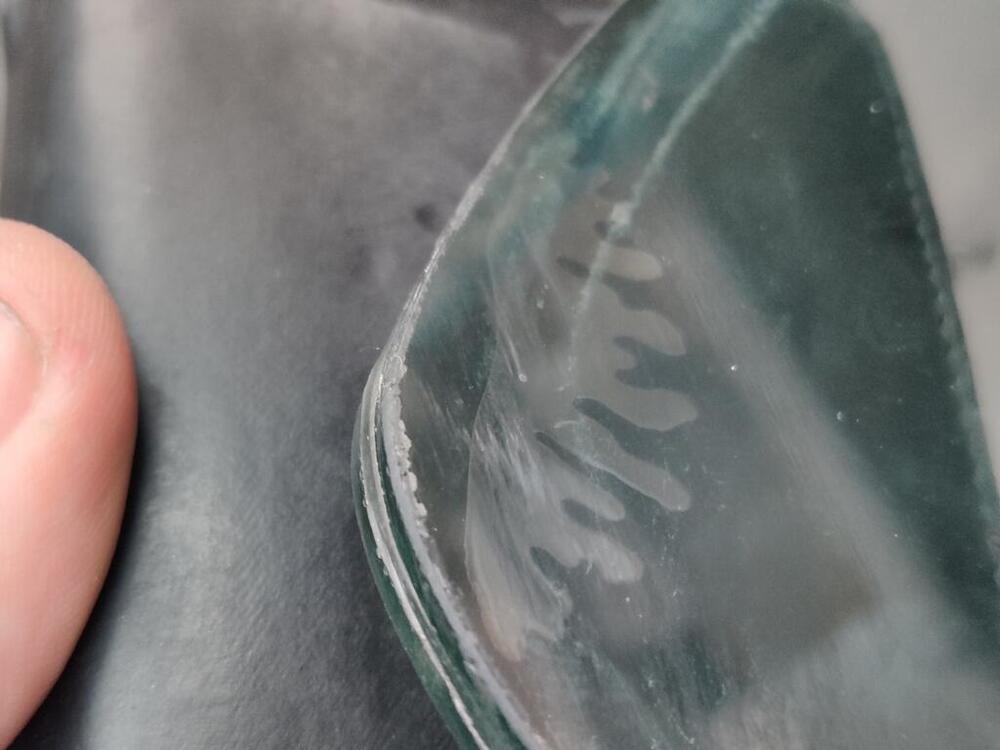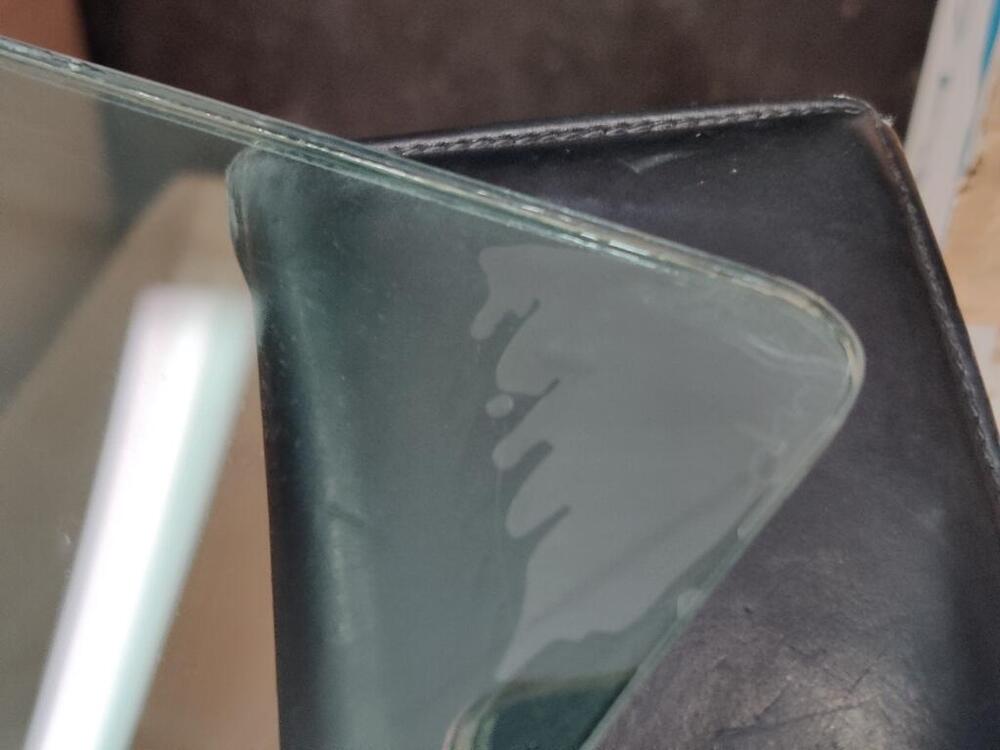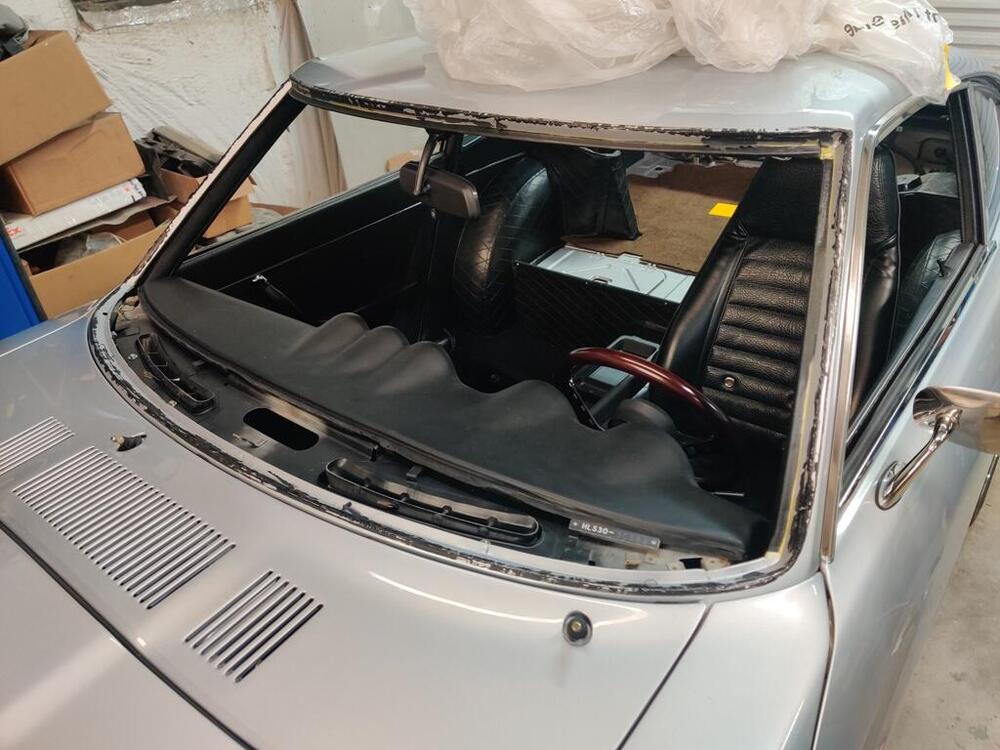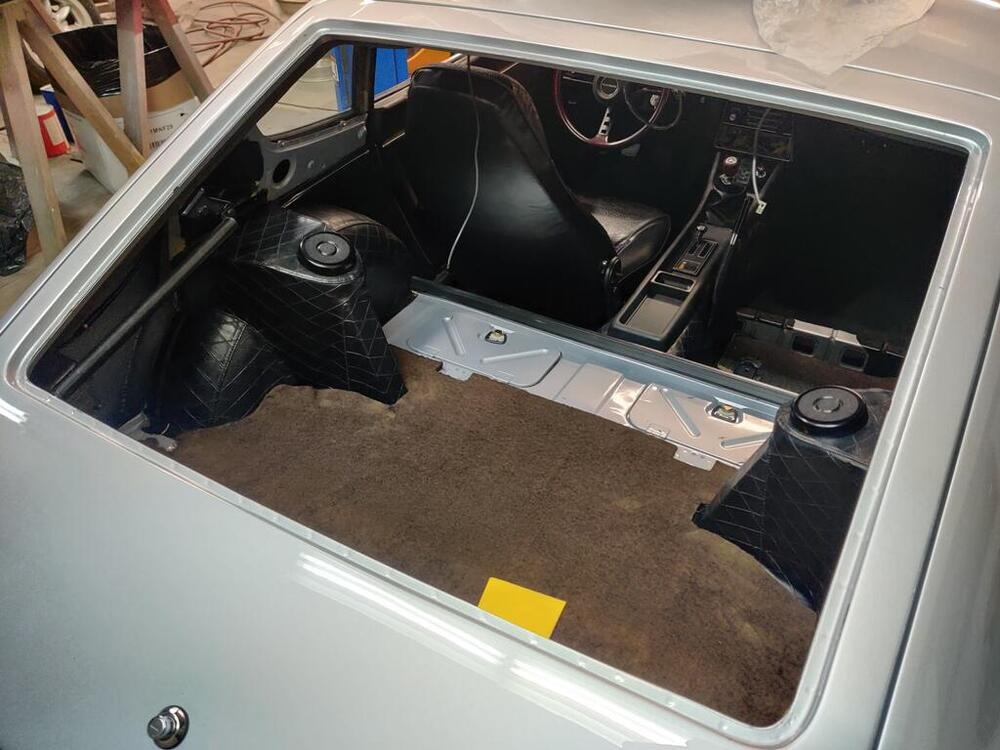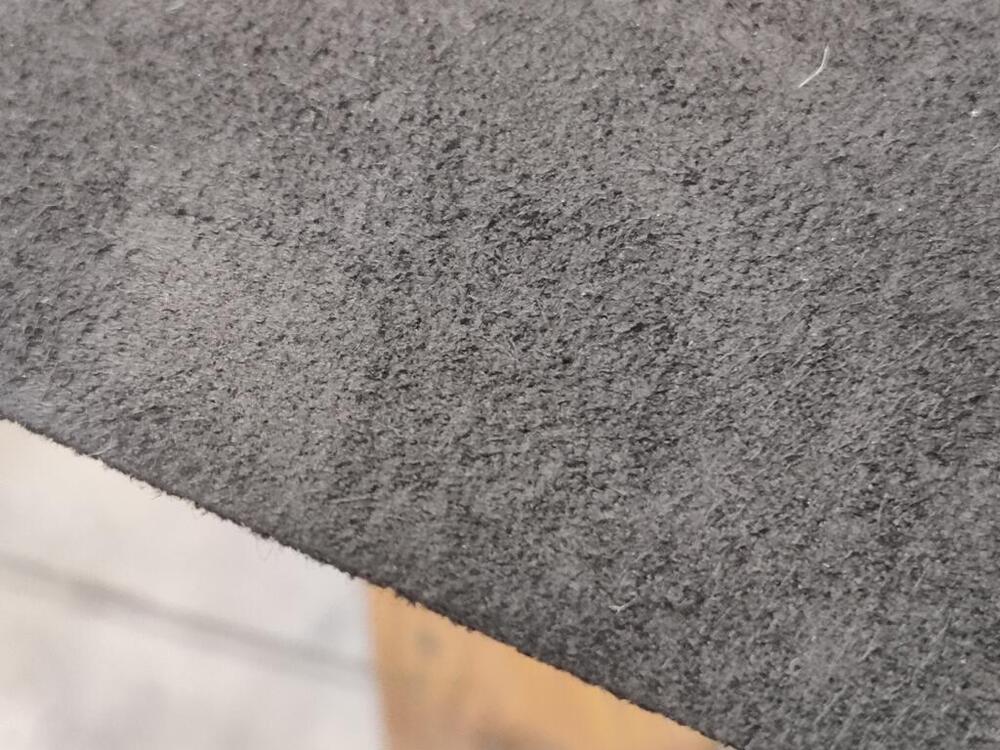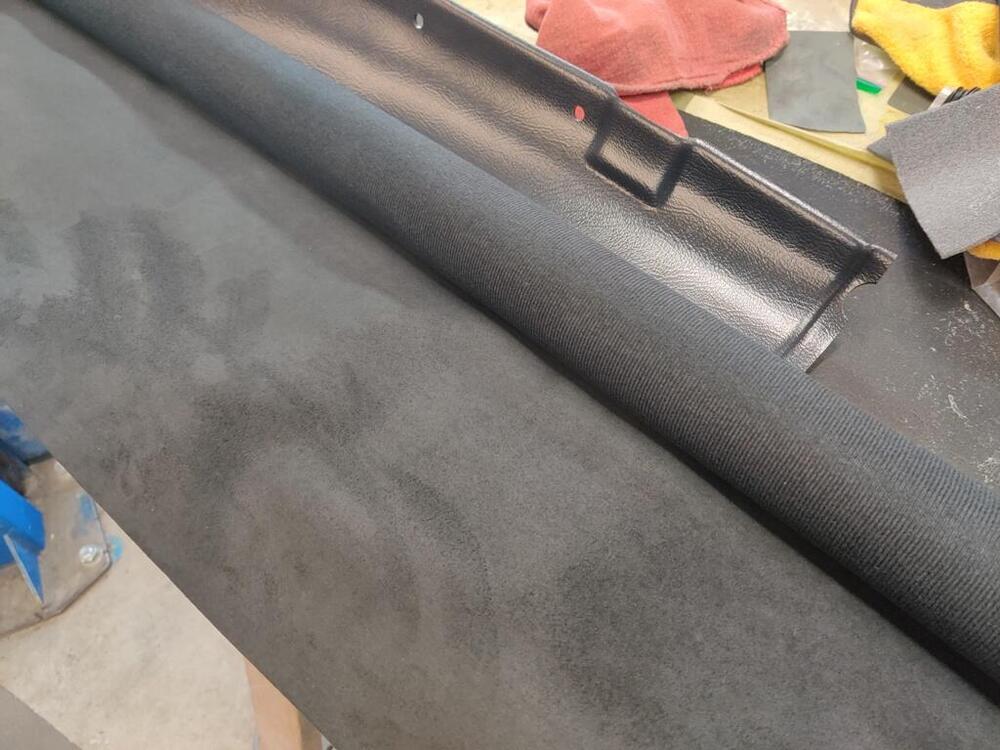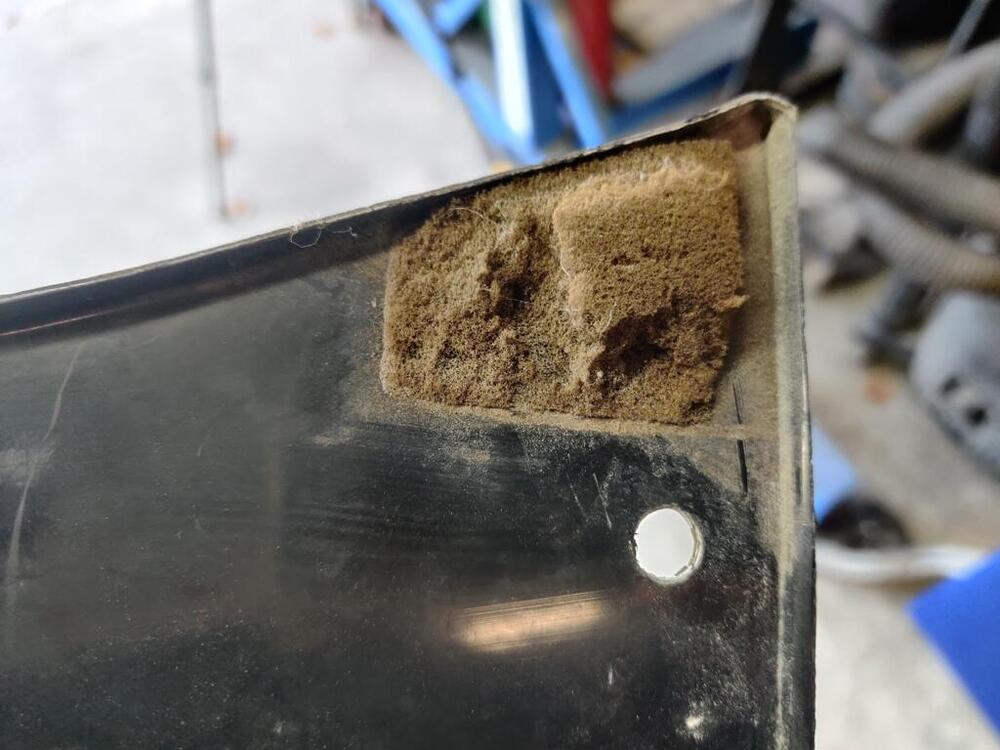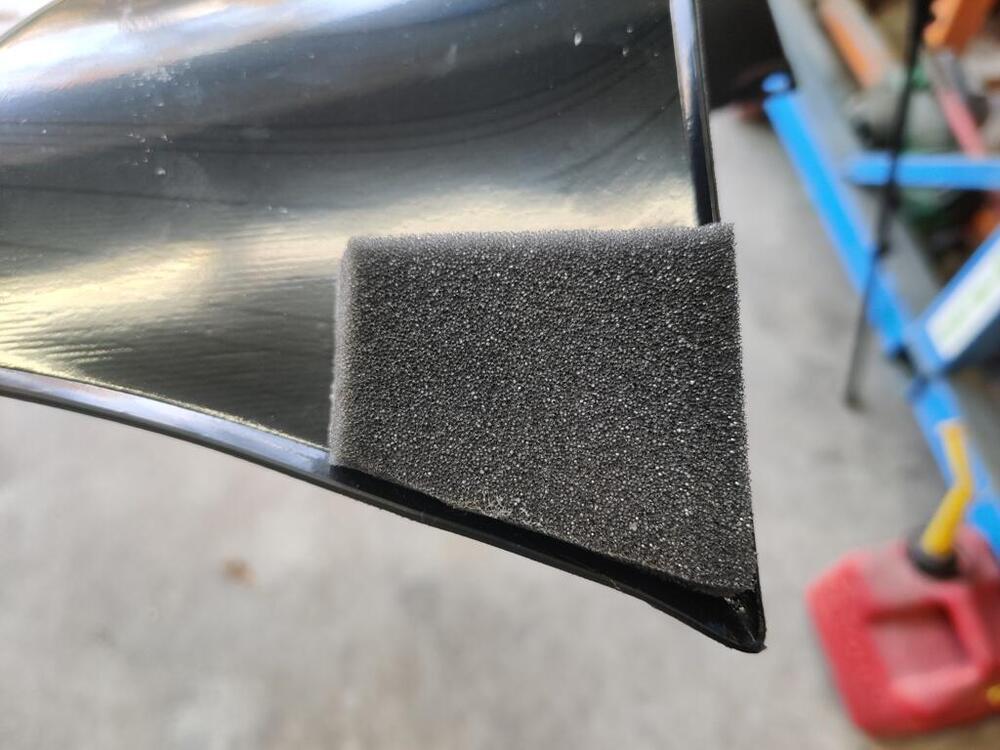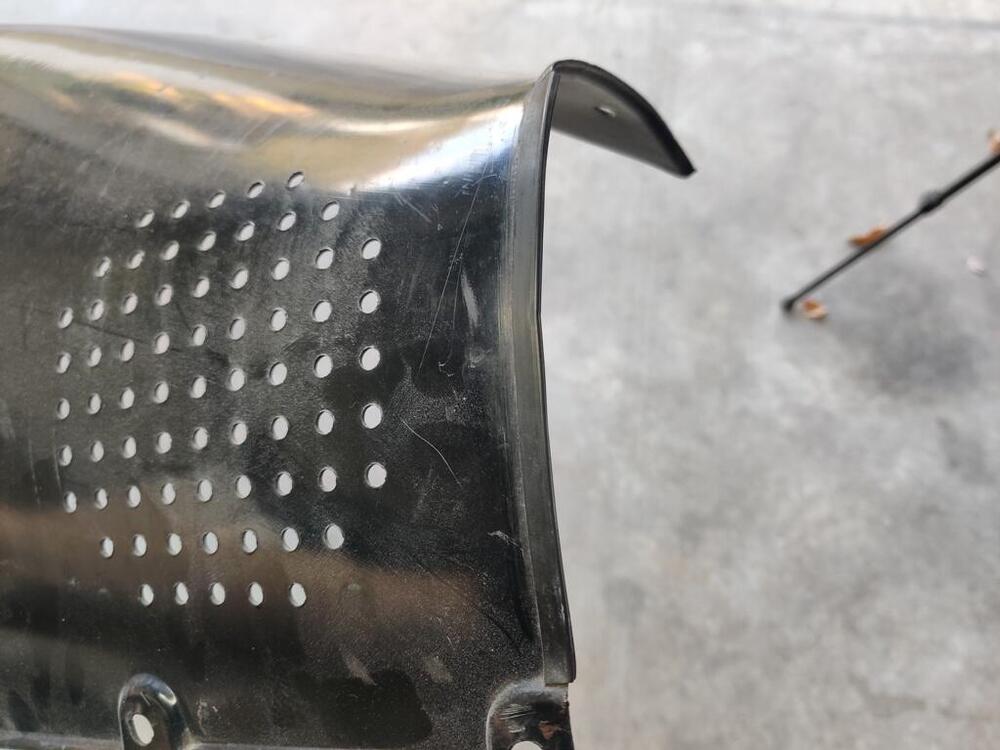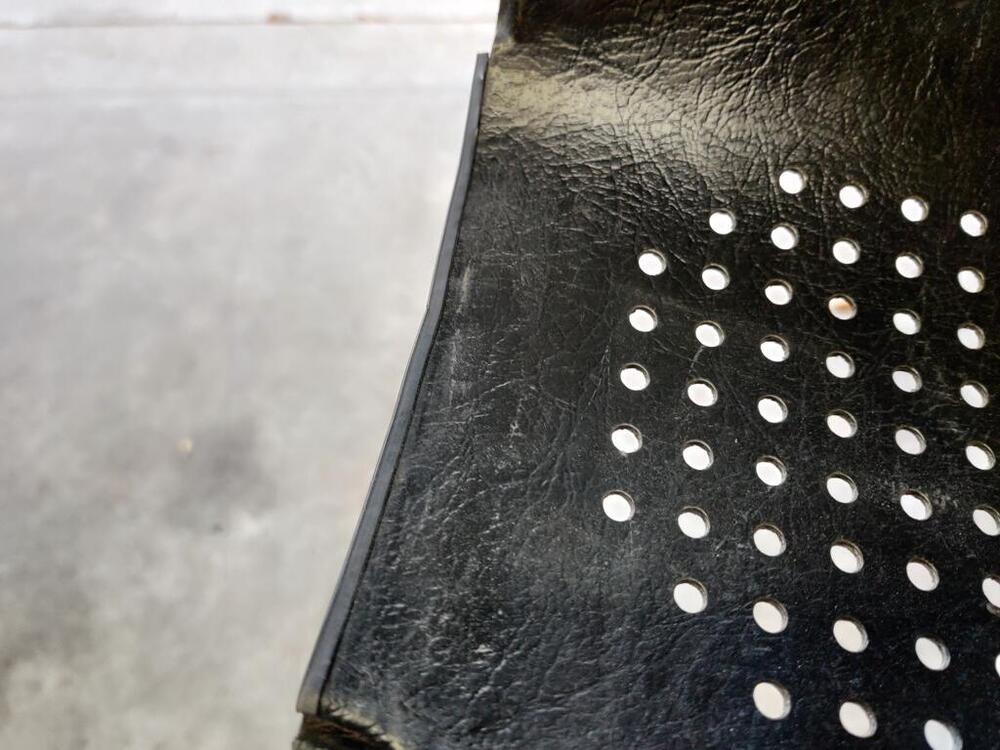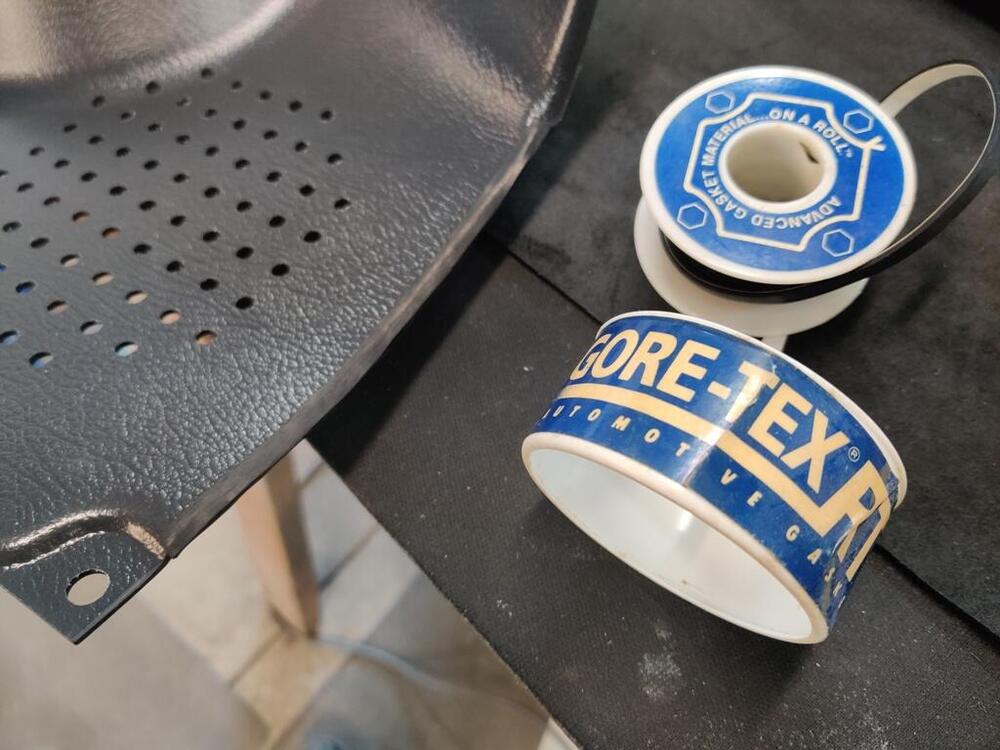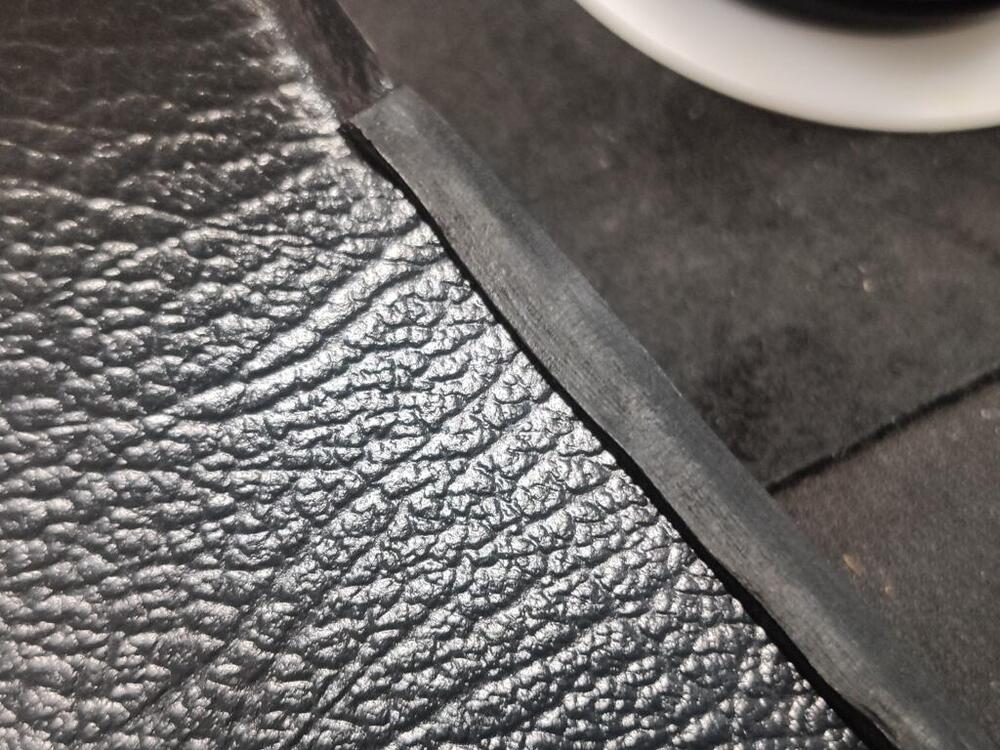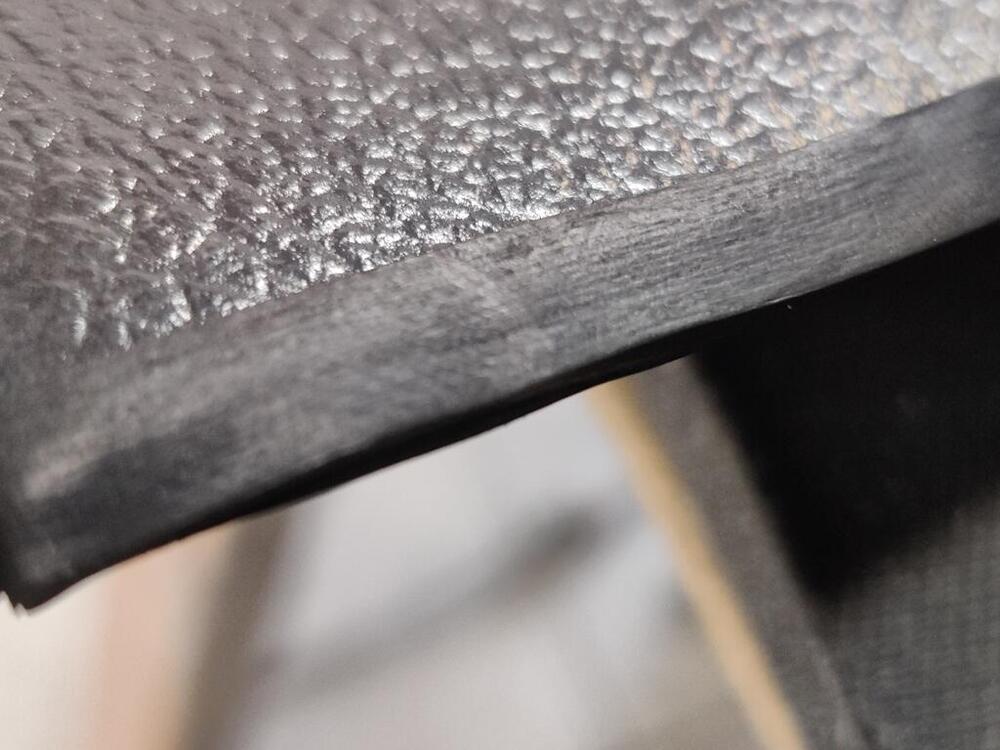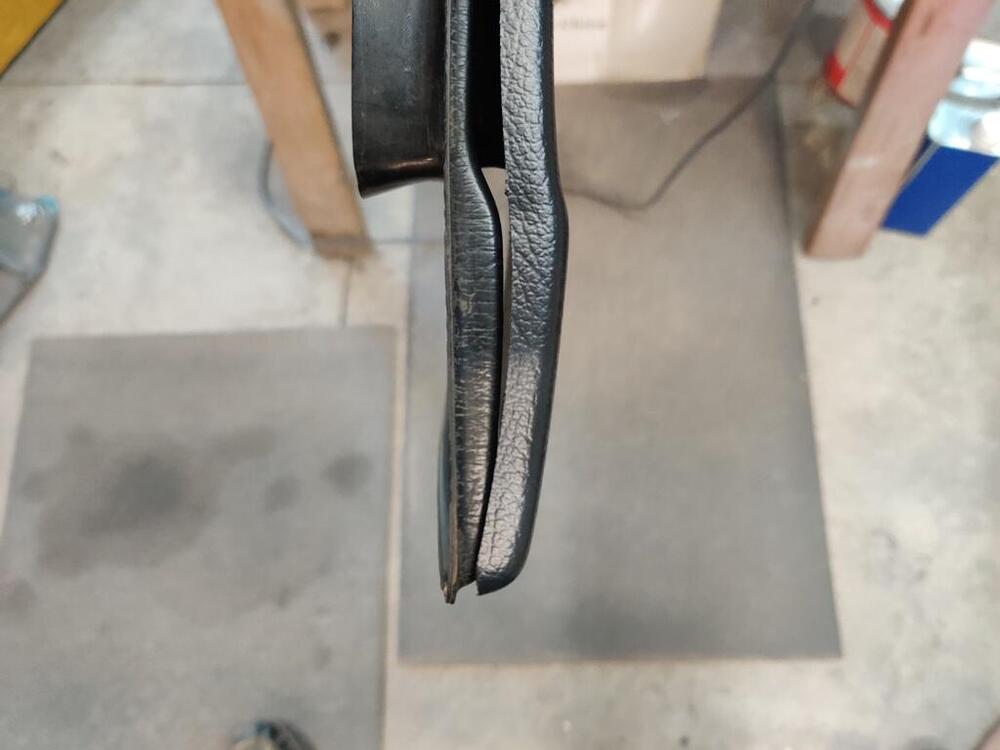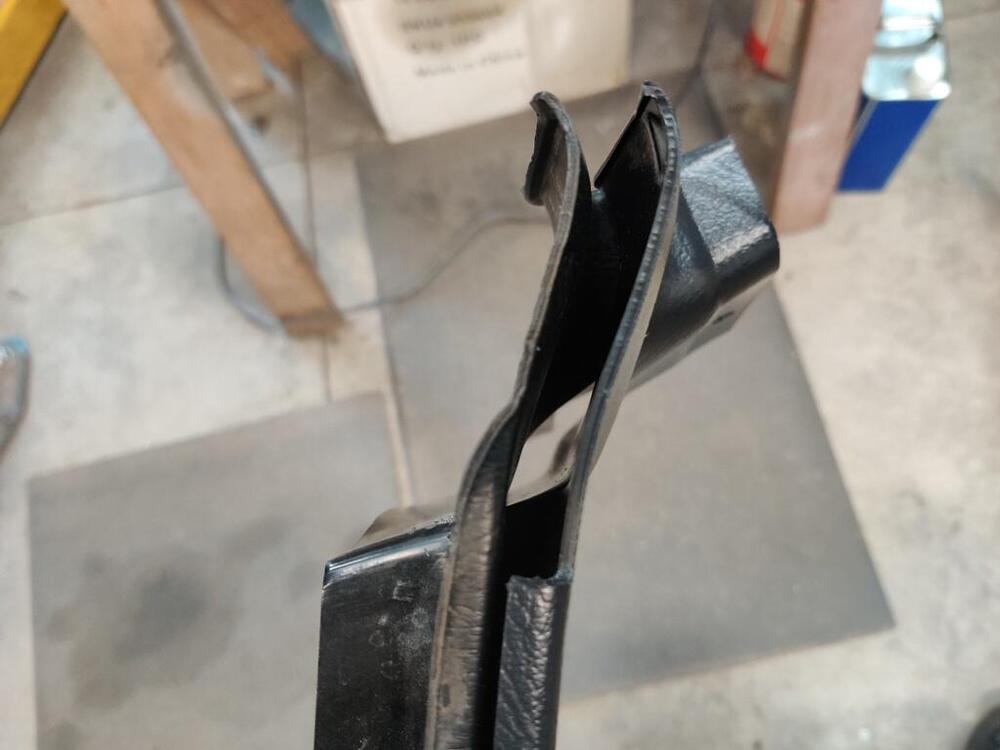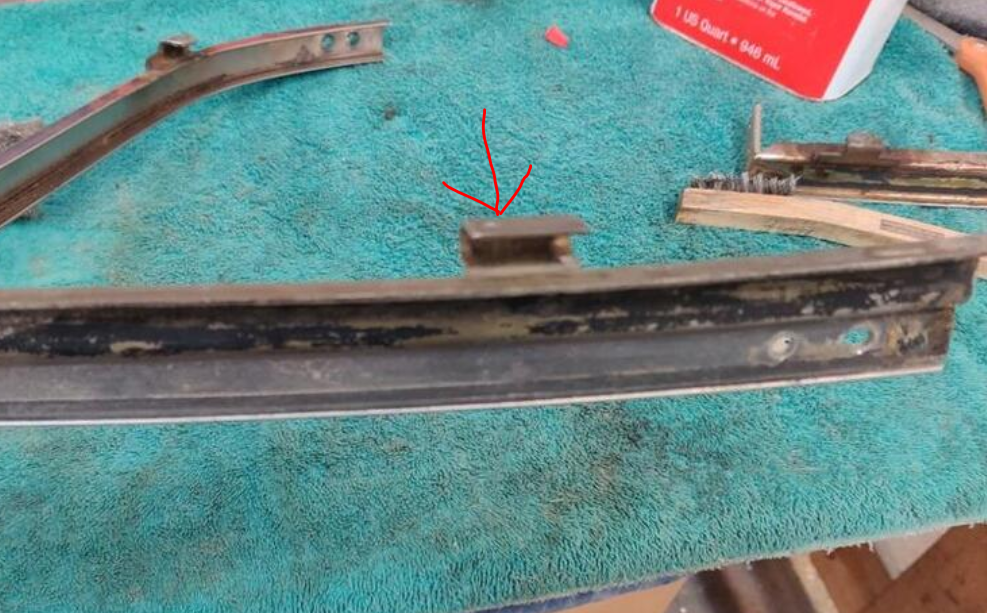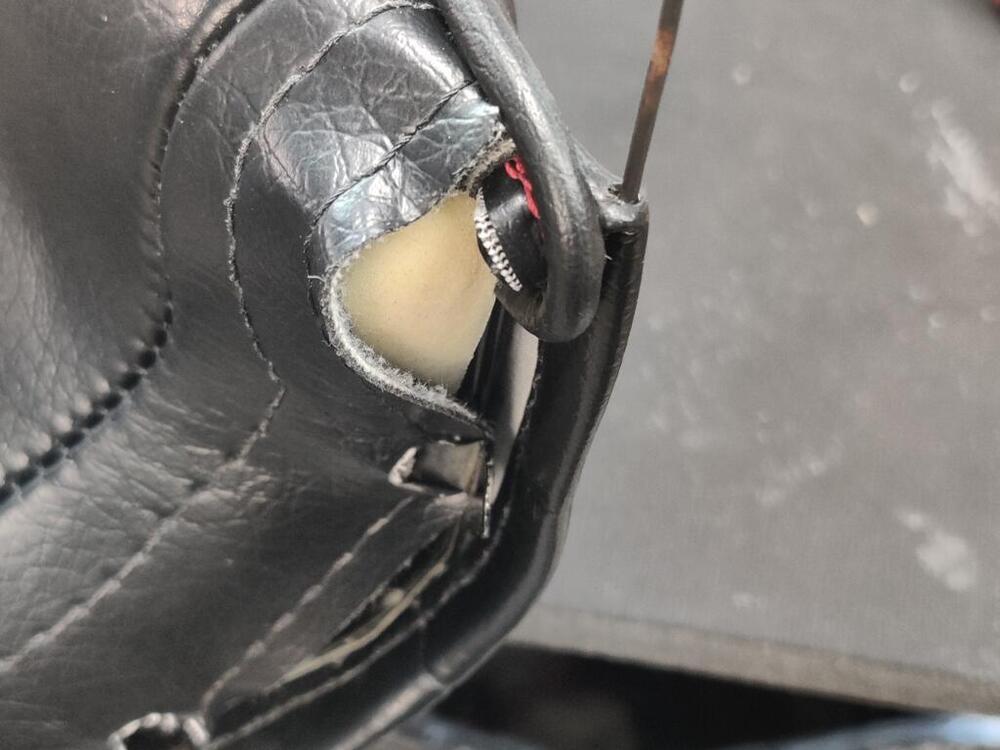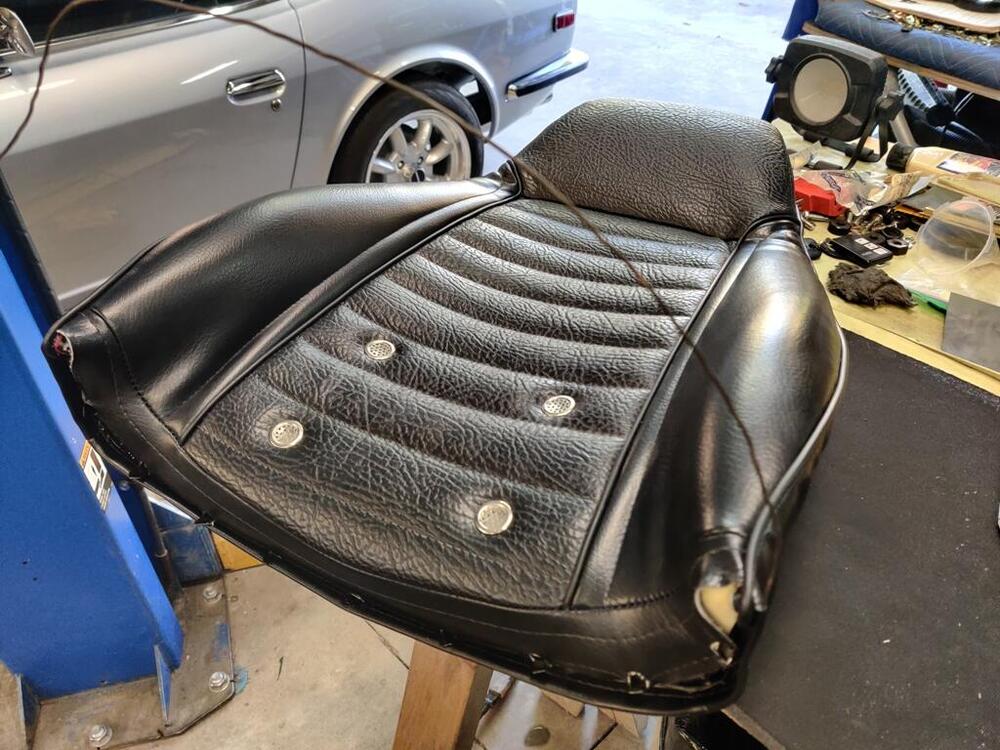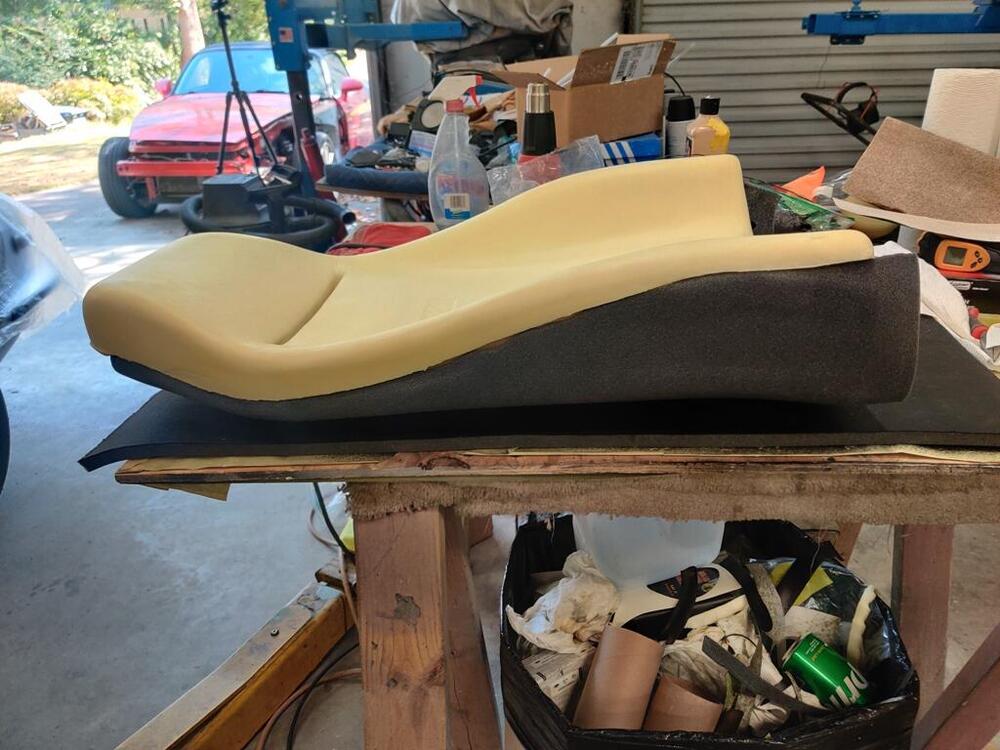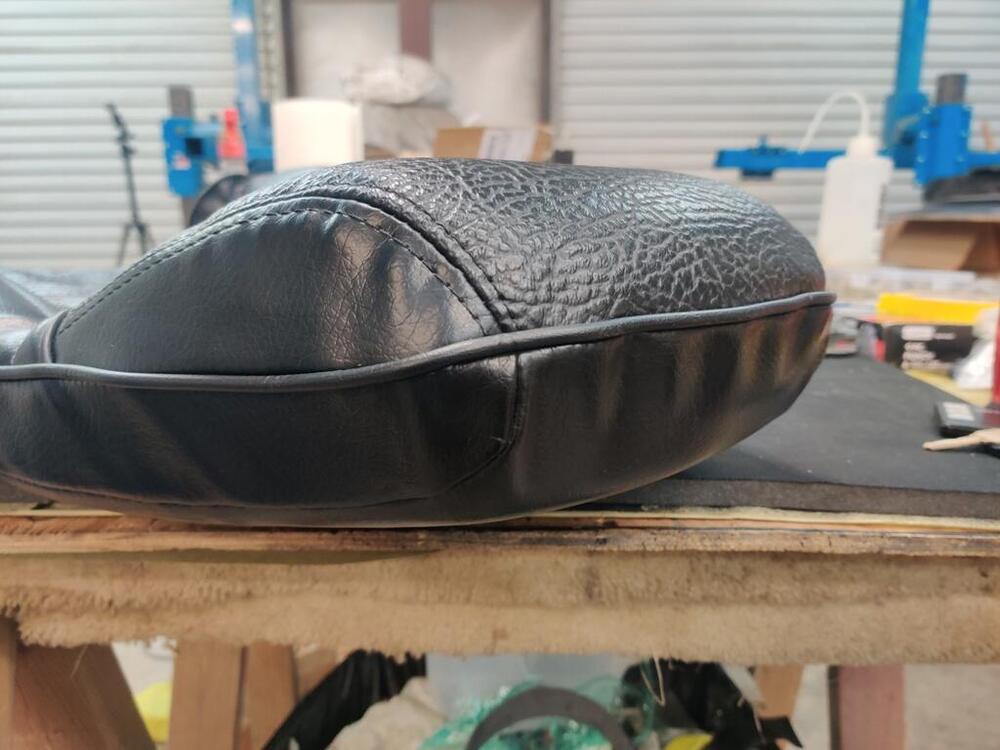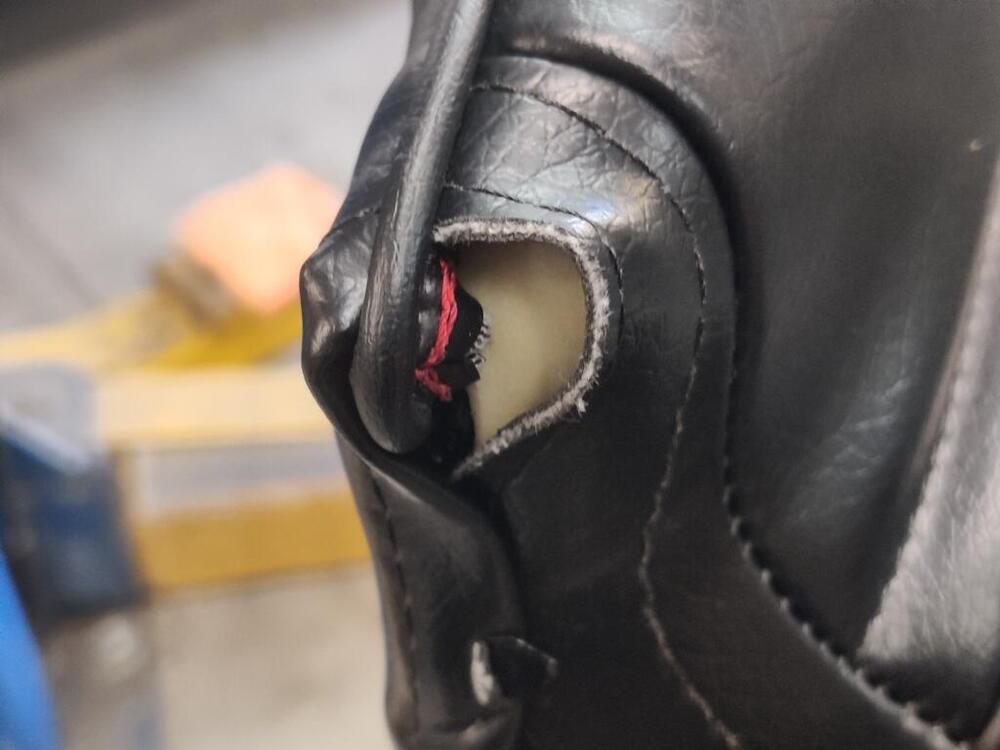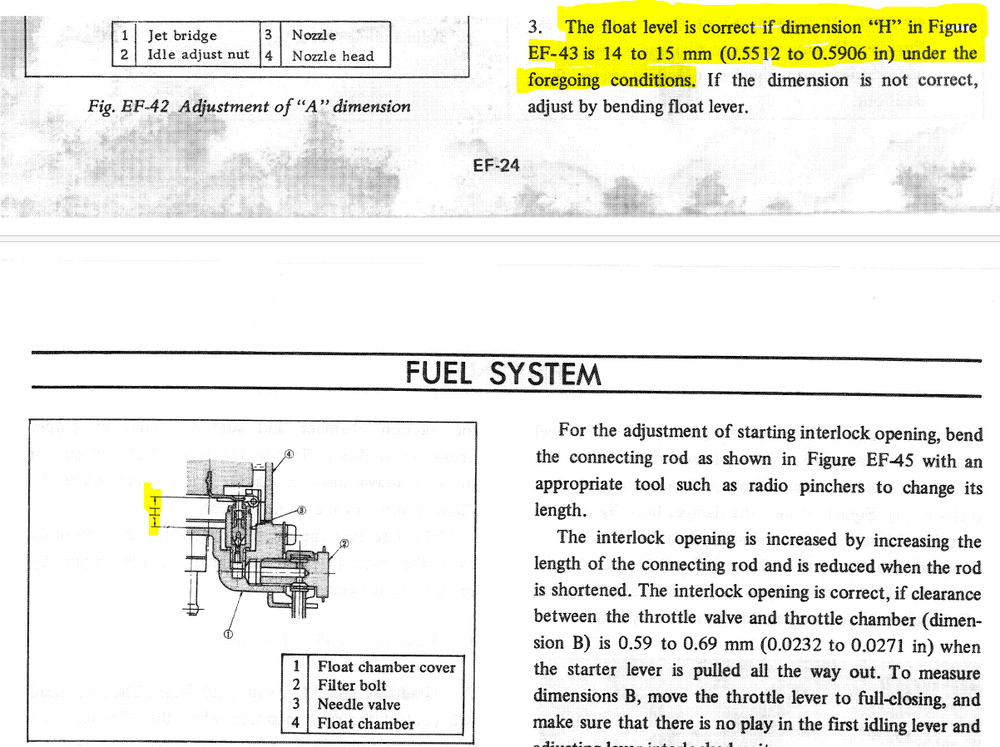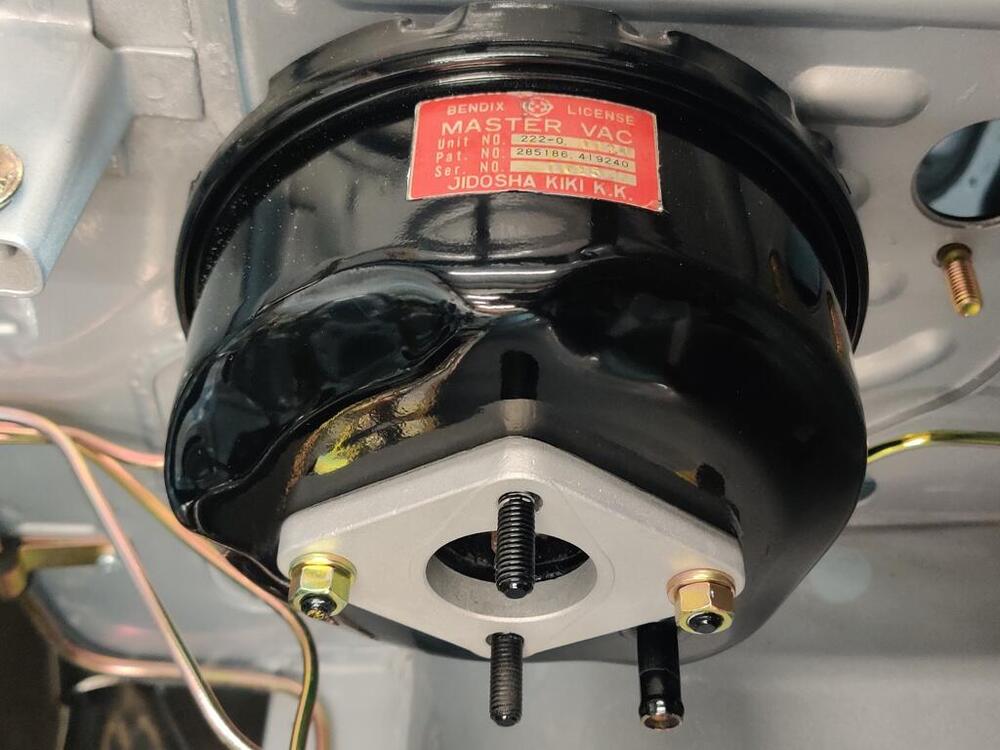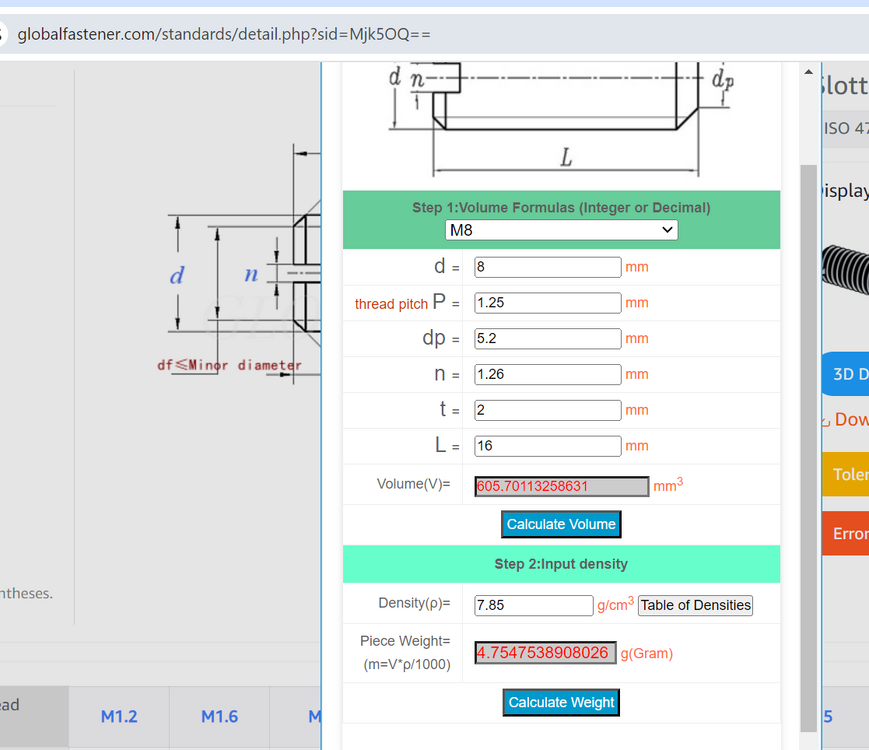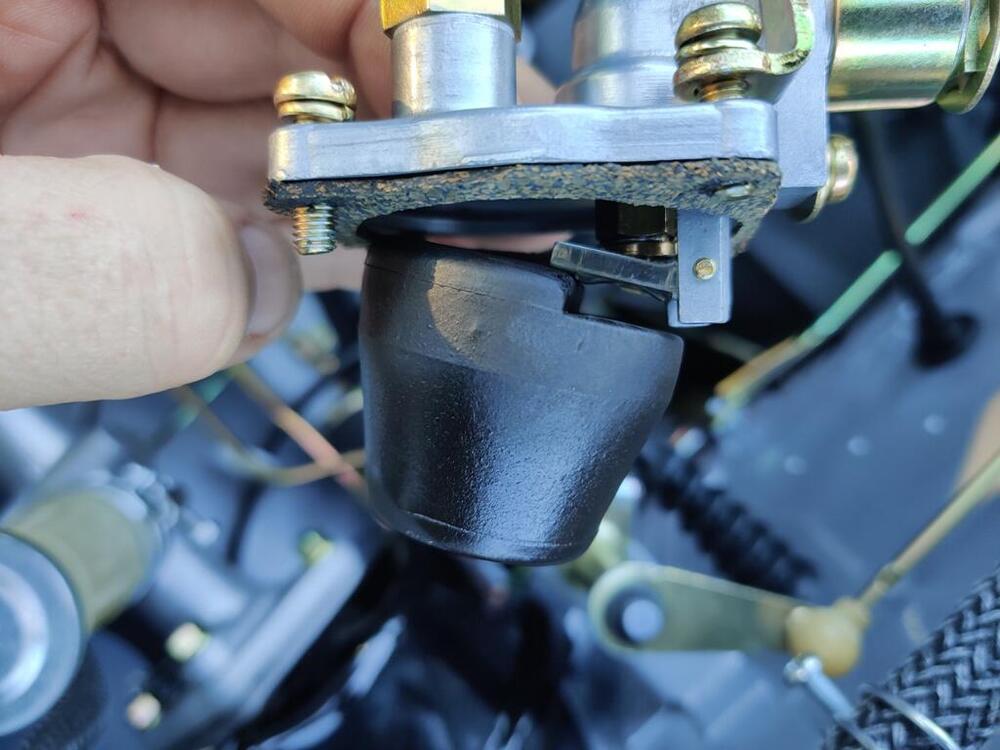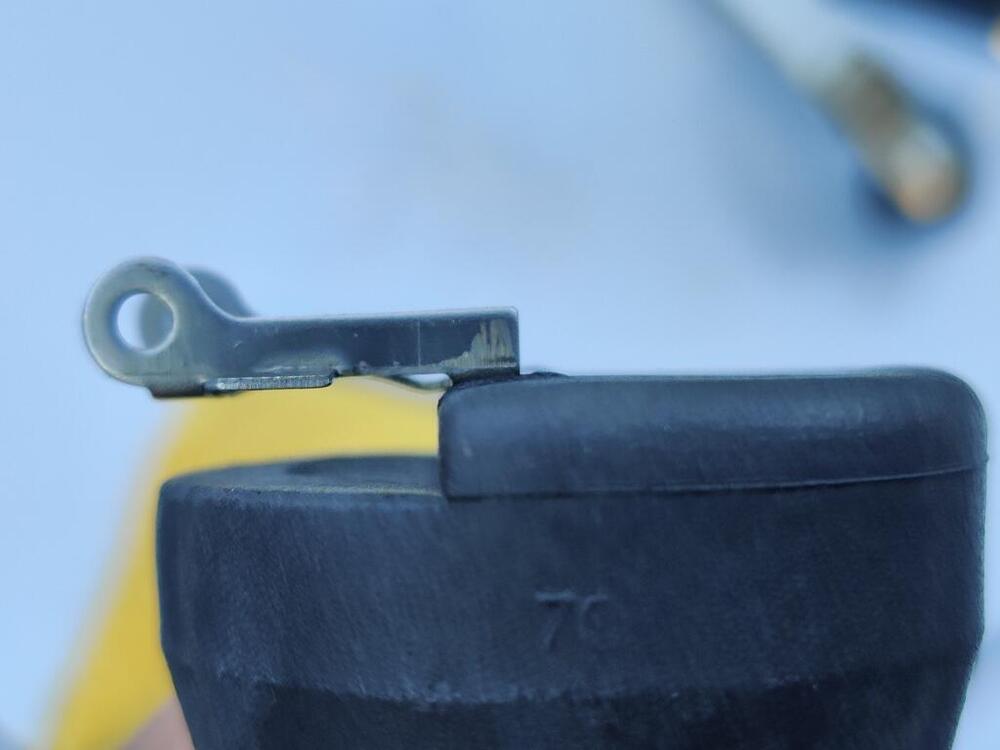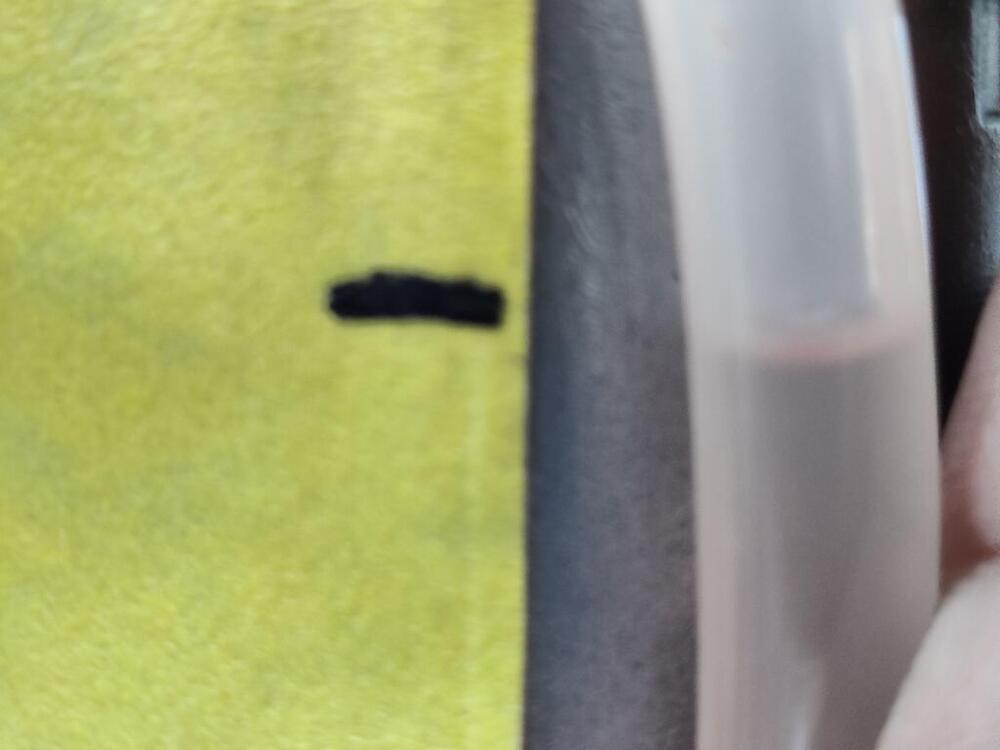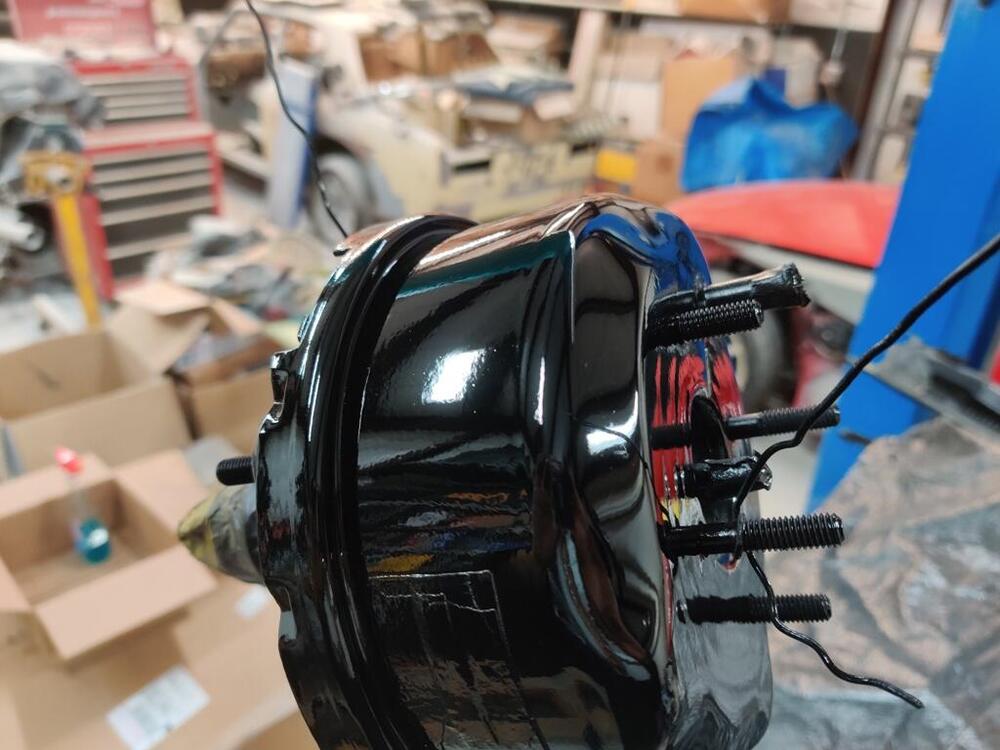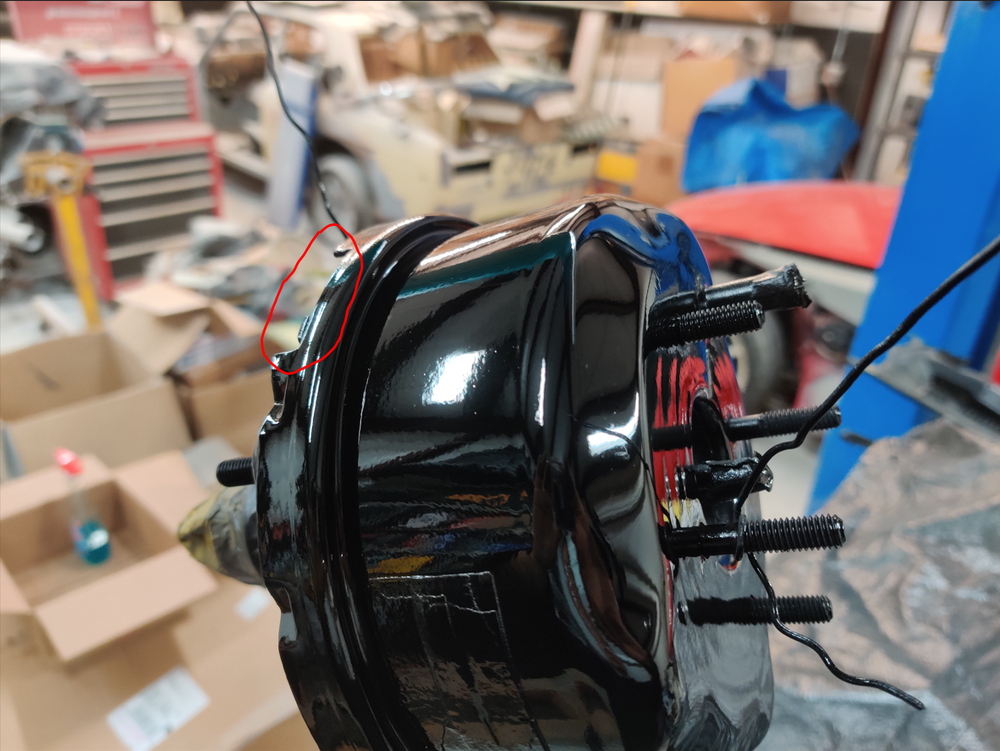Everything posted by inline6
-
Restoration of BringaTrailer 240z - HLS30-35883
With the assistance of a helper, I was able to install the hatch glass again last night, this time with the stainless trim already installed in the gasket. The hardest part was getting the outer edge of the seal to seat against the outside of the hatch surface, when pulling the cord to start bringing the seal lip over and to the inside surface of the pinch weld flange. I started pulling the cord in the middle of the bottom side. With the stainless trim installed, the outside edge of the seal wants to tuck down inside the hatch glass opening instead of being pushed outward to lay flat on the outer surface. To solve, you need to push/pull the hatch glass/weather strip assembly downward toward and against the bottom of the opening. If you do not, the glass will want to move away from the bottom side and as you pull the rope, the outside edge of the weather strip will tuck inside outer edge of the opening (the part where the outside surface of the hatch turns 90 degree downwards to create the flange for the hatch glass. After a couple of false starts, where I had to put the glass back on a work surface and put the rope back into the groove, we understood that we needed to keep the glass tightly against the bottom edge as I pulled the rope to bring the inner lip of the seal into the inside of the weld flange. Pulling the rope around to each side and up each side equally, and then across the top, there were no issues. We found that for the top edge, pushing on the outside of the glass (to press it into the window opening) worked better as I pulled the rope for that side (fourth, and last, in the order that I went in). This time, there are no cuts or nicks in the rubber seal at all. For some reason, this factory seal had a bunch of gummy stuff all over it, perhaps to assist with installation, if I am guessing. It seemed a lot more flexible that the other one that I destroyed. Perhaps it was much newer than the previous one I used. I still need to remove that with adhesive remover, and when I do so, the stainless trim won't look dull like it does now. Today, I plan to work on making a copy of brake booster tool ST08050000 so I can get my brake booster apart to start rebuilding it.
-
Vacuum advance part identification
I just set the ignition timing on my car yesterday using the process I described above. I could warm the engine up, check the timing with a light with the ported hose connected to my vacuum advance, and see if the setting is different than what I set it to yesterday with the hose disconnected... There is vacuum present at the rubber hose (to vac adv. assembly) - I verified that yesterday. It is slight. Perhaps it is too little to cause movement at the plates in the distributor at the present idle speed. Easy enough to test.
-
Vacuum advance part identification
Me either. I am not certain that either the correct vacuum advance, or the NOS (and incorrect) one does nothing at idle. The proper way to set initial ignition timing is to disconnect the vacuum advance, yes? Separately, I have always wondered why the timing specs are at RPMs that are "too low". For my Euro distributor, the spec is 17 degrees BTDC at 550 RPM. To achieve that low idle speed, I have to unplug the vacuum advance unit and seal the tube to the intake manifold, mess with the throttle plate screws on the SU's to lower idle speed, but keep the front and rear carbs in sync. Then set timing at 17. And finally, bump the idle speed up to something a bit more pleasant (750 rpm). And reattach the hose to the vacuum advance. By the way, disconnecting the NOS one solved the rev/die situation. And with the correct vac advance and linkage bits, the engine is not doing that. I suspect that the Pertronix unit didn't like the amount of movement the NOS vac advance was causing. I will be checking (as best I can) the timing advance as the engine revs soon.
-
Restoration of BringaTrailer 240z - HLS30-35883
Found these in my misc. zip lock bags of Datsun hardware - so I am all set for the hardware now for the quarter window interior trim panels. I installed the rear hatch glass into another NOS rear hatch weather strip I had on the shelf. And, I again polished the stainless trim for the rear hatch glass, only this time, I installed it while the hatch glass is off of the car. I don't have any more of these weather strips on "the shelf"... so this one needs to go in without any problems!
-
Vacuum advance part identification
I reinstalled the original vacuum advance that came with the Euro distributor when I bought it about 30 years ago. It still holds vacuum when applied with a tool. So, I primed and painted it (silver). I'd still like to find the correct replacement (yellow chromate/zinc). With it installed, the engine does not rev and die like it did with the other one (NOS but of unknown application). The shaft that the spring goes on is both longer overall, and longer when it is fully pulled in by the vac adv diaphragm. So, there is that known difference. I guess I will keep looking a replacement original part "22301-E4601". But, it would be nice to have more knowledge about these original vacuum advances, so I might have a better chance at finding one that would be a suitable replacement (with swapping the linkage parts).
-
Vacuum advance part identification
Does anyone know what these letters and numbers ink stamped onto the vacuum advance mean? I see a lot of different combinations on the parts I have seen for sale. A lot of times, there is not vehicle specific applications listed. Are these just date codes? I'd like to replace the original vacuum advance on my Euro 240z distributor, but I won't have much luck looking for that part by application. I bought a new vacuum advance that "looks correct"; however, when I hook up the vacuum line to it with the engine operating, the engines revs and dies repeatedly. I am running a Pertronix ignition pickup, which may matter. And I plan to do some testing on the new vacuum advance as well as my old one which is still functional. But, it would be nice if I at least knew what I was looking for in a replacement vacuum advance.
-
Restoration of BringaTrailer 240z - HLS30-35883
Thanks to all who responded! In other news, a friend from VA visited this past weekend, and we tried tackling one of the tough jobs: installing the new stainless trim in the windshield gasket. I bought a tool from Lisle to assist and some Precision lube. We gave it a go... and even with two "car guys" being extremely careful, we sliced the gasket in many places (and I sliced myself in three places) trying to install it. I am concluding that it is impossible to install the stainless trim after installing the windshield in the car without cutting the gasket to shreds. It may be possible with an aftermarket windshield gasket, but it is certainly not with an old NOS one. So, while he was here, we then cut up the NOS gaskets for the windshield and the hatch to get the glass out. The urethane adhesive I used didn't do an especially good job of gluing the gaskets to the body - this I am thankful for. It did, however, do an especially good job of sticking to the body. So, it is a bitch to get off the car. One positive thing I guess: after install the windshield weeks ago, I noticed that in 3 of the 4 corners of the windshield, the two pieces of glass (front and back) started delaminating. With the windshield out, I may be able to repair that. Or, I may just try to source another windshield. Just to round this out, I recommend that you never install the glass without putting the stainless trim in the grooves of the gasket first. Out of all the work I have done on the car, installing the stainless trim on already installed gaskets is easily the hardest and most frustrating thing I have attempted. Removing the urethane adhesive from the body of the car is up there as well. I started removing the adhesive the rear hatch panel, and than part of the windshield. But I have a blister forming on my thumb, so I will take a break from that. I have gone backwards more than forwards this time.
-
Restoration of BringaTrailer 240z - HLS30-35883
The J hook on the early cars goes on the seat. The J hook on my 1971 car goes at the bottom front corner of the quarter window trim panel. Thanks for this pic! You can see that part much more clearly.
-
Restoration of BringaTrailer 240z - HLS30-35883
-
1971 HLS30-14938 "Lily" build
Referencing this nice exploded view and my comments earlier, #9 is the valve that got stuck. #10 is a rubber part that fits on #9. When the rod portion of #9 seizes in #12, then the cylinder operation stops working properly. I don't know exactly how it works, but I think #9 works like a one way valve - it seems to close the circuit, which then allows the main piston and primary cup to move fluid. When #9 is stuck in the "open" position, fluid just flows back and forth, and no force or movement of fluid is generated.
-
1971 HLS30-14938 "Lily" build
I recently couldn't get my clutch to bleed (just after I couldn't get my brakes to bleed), and the problem was the little slider valve found on the piston assembly. No pictures, but the little valve for the clutch master cylinder is much easier to get to than the one on the brake master cylinder. it has a little spring on it. Should be easier to disassemble and make sure it is not sticking.
-
Restoration of BringaTrailer 240z - HLS30-35883
With the "wet set" method, I was setting them in the installed state, adding gas through the inlet to the float chamber. I was setting the height of the fuel (as seen by looking at the translucent nylon tub attached to the float chamber outlet) to 20 mm below the casting separation line of the chamber and the lid. I switched to setting at 14 to 15 mm between the bottom surface of the float chamber lid to to the top of the metal portion of the float. I did this by cutting and grinding 2 3d size trim nails - one to 14 mm in length and one to 15 mm in length. Using needle nose pliers, I hold each and place them vertically aligned between the float and the roof of the chamber lid. I hold the float pressed against the nail, pinching the nail (vertically aligned) against the roof... and I blow into the fuel inlet. Using the 15 mm nail segment, air can flow from the inlet past the needle valve. Using the 14 mm nail segment, it cannot. I used this method with the rear carb only. I did this yesterday. Today I started the car and the fuel did not gush out of the vent in the chamber lid. I did not run it long or do a test drive. FWIW, this second method is what I always used for my other Z when it had SU's on it. I never had problems with either fuel overflowing or performance, for that matter.
-
Restoration of BringaTrailer 240z - HLS30-35883
So a quest for the highest acceptable fuel level in the chambers may not have any value at all! Perhaps I can investigate that a bit with the wide band in coming months.
-
Restoration of BringaTrailer 240z - HLS30-35883
Some of my progress over the weekend included some modifications to the new interior trim panels. First, I glued some faux suede material (purchased from www.yourautotrim.com) in the spot where the quarter panel trim piece overlaps with the rear panel. I did this because the original trim panels in my track car squeak when they rub together. While my restoration car may have a bit more torsional rigidity (being relatively rust free and much lower miles), the torsional rigidity is not high on these cars by today's standards. So, this is an attempt to prevent noises. I think the material these aftermarket replacement panels are made out of is less likely to squeak from rubbing also. Additionally, I placed foam in the same locations as on the original pieces: I have some of this Gore-Tex that has been laying around for ages. I use it for various rubber gaskets like the ones at the back of the rear panels (panel for the first two pics, and the third pic is of the aftermarket panel): I put one piece of Gore Tex on the frontside , and one on the backside, and pinched them together at the back edge. The aftermarket quarter panel trim has slight differences as seen in pics two and three here: I used a 4 1/2" grinder with a mild sanding disc on it to quickly (and carefully) re-contour the front edge in a few places to improve the fit of the quarter panel piece to the car. The front edge was taller than it needed to be in some places. Fitment was much improved after removing some material. Can anyone tell me what this bracket on the quarter windows is for? There is a small hole in the original quarter panel trim at this location. I think it is simply there for securing the front edge of the quarter window interior trim panel, as it would be loose for most of the front edge otherwise. Anyone have any pics of the hardware used at this location? It may be specific to the 1971 cars.
-
Restoration of BringaTrailer 240z - HLS30-35883
It seems like the only thing it could effect would be fuel flow, and that with the level lower, it would "less". Are there other effects you are can think of?
-
Restoration of BringaTrailer 240z - HLS30-35883
I find it interesting that setting the float using 14 to 15 mm (I use a 3d nail cut and then ground to size and then fit between the metal part of the float and the roof of the float casting cover), achieves nearly level angularity of the float top surface with the underside of the float chamber cover. The two methods are wildly different. I wonder if going down the road and chopping through bumps... I wonder if the float level rises up a bit more because the float is bouncing around in the chamber. I don't know what the performance difference is with the fuel level too low vs "higher". I guess more experimentation is in order. I do have a LM-2 Innovate wideband sensor, and my exhaust has a fitting for it. Maybe some testing with different fuel level settings is in order.
-
Restoration of BringaTrailer 240z - HLS30-35883
I worked on the other seat today. Lots of setting them out in the sun to assist with making the vinyl fit. My thumbs are jacked up from all the effort to persuade the seat back vinyl on far enough to get it over the hooks! The bottom cushion is a breeze. The backs are a pain. This time I did not use any thin plastic. I honestly don't think it made a difference. Getting the seat back upholstery down low enough to get onto the hooks is difficult. Having done two seats now, I think I see another improvement that can be made with the foam. Like the bottom cushion, and removing a bit from the front most edge, the seat back cushion could be modified for a better fit. I don't have great pictures to show exactly, but the back seat foam rises above the top edge of the metal seat back by quite a bit. You can kind of see that in this first picture. The foam is molded with an indention that the frame bar fits to. The head rest portion of the foam rises up over the frame by a good inch or more. However, as you can see (if you look closely) in the second picture, when you get the upholstery pulled down to where it belongs (to get it on the hooks on the bottom of the seat back frame) the foam which extended past the top of the back seat frame is compressed substantially, so that the top is nearly in the same plane as the top of the frame. In the second pic, the seat frame is what is locating the vinyl on the back half of the head rest. And the foam on the front half is no longer sticking up higher. The vinyl on the front half of the head rest is quite tight, as is the vinyl on the back surface of the seat rest. However, there is a bit of "void" around the periphery of the back half of the head rest. With some experimentation, I believe that trimming and sculpting the top edge of the back seat foam (to lower it a bit), as well as adding some pieces of foam around the edge of the seat frame at the top and about 3-4 inches down the sides would provide a better result. And, it would make it easier to get the back upholstery onto the hooks. I thought I would show where I added some wire as well. The bottom "roll" of the seat back upholstery (the back panel) has no cord or wire. So, I inserted some annealed wire that I got from Home Depot. I just ran it into the loop and pushed it through the full distance of the loop With this in place, I made slits in the vinyl at each hook. And when I bent the hooks over, they hooked around the vinyl and this wire. Without the wire, the hooks would only be grabbing the vinyl for the width of each hook. With the wire, the hooks grab the wire running the length of the vinyl, so all of the vinyl is holding the upholstery onto the frame. With both seat backs, I ended up with this in the corners: I think I will try some needle and thread work to tidy this up.
-
Restoration of BringaTrailer 240z - HLS30-35883
Is this the place? https://harmonclassicbrakes.com/
-
Restoration of BringaTrailer 240z - HLS30-35883
Thanks. I found a weight calculator: https://www.globalfastener.com/standards/detail.php?sid=Mjk5OQ== Plugging in stainless steel and M8 X 14 mm, it shows 4.08 grams. Just such a size is available from Belmetric without having to buy a whole bunch: https://belmetric.com/m8x1-25-a2-stainless-iso-4026-flat-point-allen-socket-set-screw/?sku=SS8X14FLATSS I drove the car around the neighborhood again today with the engine up to temp. There is a steep hill in the neighborhood, which is good for loading the engine. At 2.5 turns out on the mixture screws, the car powers up the hill ok. Still feels a bit lean though. Drove around for 10 minutes or so total. Came back to the garage, and hopped out to look the engine over briefly while it was running. Blipped the throttle a few times. It sounds nice. I blipped a few more times... and the rear float bowl started spewing fuel up through the float vent again. ☹️ While my intermittent overflow issue could be something else, (maybe the needle and seat is not working properly after all) I think the problem is the extreme angularity of the float. I am going to set the float height one more time using the 14-15 mm distance as shown in the factory workshop manual instead of wet setting at 20 mm below the float chamber cover bottom edge. Using this method, I will check the fuel level using the clear tube as when setting the floats using the wet set method. I want to see where the fuel height is compared to when wet setting at the 20 mm spec. Depending on what I find out, I may proceed with modifying the floats by installing one M8 X 16 stainless screw per float.
-
Restoration of BringaTrailer 240z - HLS30-35883
Does "Power Brake Exchange" only do swaps, with me having to "exchange" my Master vac for another? I want to hold onto my original one.
-
Restoration of BringaTrailer 240z - HLS30-35883
Something like this perhaps? https://belmetric.com/m8-slotted-grub-flat-point-set-screw-brass/?sku=SS8X10SLFLATBRS or perhaps stainless would be better because it is heavier: https://belmetric.com/m8x1-25-a2-stainless-iso-4026-flat-point-allen-socket-set-screw/? And what are your thoughts about drilling and threading up the center of the float on the bottom surface? Using the same logic you mentioned, if it were to back out, it would either drop out (and lower the fuel when it does), or contact the bottom of the float bowl, and hold the float up higher, dropping the level of the fuel.
-
Restoration of BringaTrailer 240z - HLS30-35883
My brake pedal effort is excessive. If you disconnect the hose that goes from the one way valve (attached with a bracket to the firewall on the 240z) and place a piece of masking tape over the open end of the valve (to prevent a big vacuum leak), and then test your brakes, if you feel absolutely no difference in pedal effort (between hose connected and not connected), then the booster is doing nothing. That is the case with mine. My one way valve is oriented correctly and functional. But brake effort is the same with the hose that goes from the valve to the booster disconnected or connected.
-
Restoration of BringaTrailer 240z - HLS30-35883
I think I recall seeing that thread at one point, but totally didn't remember it. So, funny (not so funny actually) thing happened this evening. I fired the engine up and was doing some brake testing in the driveway. Went back and forth a few times. Got out of the car and left the engine running while I walked to the garage to get something. As I was walking away from the car, the idle dropped quite a bit. I turned around and came to the open engine bay to inspect, and yet again, fuel was running up and out of the rear carb float vent. So... I really don't want this car to catch fire and burn to the ground. @Captain Obvious, thank you for pointing me to that thread. I think I'd feel a lot better if I added some weight to my original floats, because I am very confident that the problem is the floats are either hitting on the underside of the float cover, or hitting on the side of the float bowls, or possibly the edge of the cork gasket! I don't like the severe angle that they are going to to close the needle and seat. In this picture, I am holding the float chamber at 90 degrees to the ground, so there is little force of the float against the needle. This is the position the float is in when it shuts the needle valve as installed on the carb float chamber, and providing me with the 20 mm spec. One thing I have seen in pics as I have been researching through forum posts is that the metal portion of the float (the part with the lever) is sometimes bent as well. That is, the whole metal part is bent up or down sometimes, such that it is not parallel with the float to surface. Here is a pic of mine. I think the metal part is bent slightly down. The pivot pin hole side is a touch closer to the top of the float than the opposite end. Bending this can have an impact on the final float position at the correct fuel height specification as well. I did one more wet set tonight. This time I went a touch under the 20 mm spec to try to avoid this problem happening again. So, @Captain Obvious, what amount of weight should I be looking at adding for 1971 carbs? Where did you land with your trials?
-
Restoration of BringaTrailer 240z - HLS30-35883
I bled the brakes and clutch again today. Brakes function, but the booster is not boosting 😉. This 7" kit is available from Zcardepot: https://zcardepot.com/products/power-brake-booster-rebuild-kit-7-inch-240z It looks like the right one to me. Anyone buy and install one of these? My booster looks like to be the rebuildable type that they mention (note red circled area): They are in Missouri, so stuff from them usually shows up where I am in Georgia within a few days.
-
Restoration of BringaTrailer 240z - HLS30-35883
Not finding needle valves readily available was probably a good thing. I probably would have ordered them, however, I went out to the garage and took the float cover off again and inspected everything again. This time I used about 10 psi of compressed air and checked to sealing. The float was turning quite a bit angled in order to get it to seal. That doesn't make sense to me. I don't get why the floats aren't more level at the point where the needle seals against the seat. In this case, the bottom edge of the float appeared to be crossing over where the side of the float bowl would be (if the cover was on the bowl). Perhaps the side of the float was interfering with the side of the float bowl and not able to rise more to seal the needle against the seat. Though I used the clear tube method to set float levels previously, I repeated that process tonight with this carburetor bowl, and again set the float level so gas came up to a mark I set at 20 mm from the bottom edge of the float cover. Is 20 mm from the bottom of the lid is correct? The needle and seat is working properly again now. I took the car for a another brief 3/4 mile drive. It was not fully warmed up, but it ran a bit better than before at 2.5 turns out on the mixture screws. Assuming I don't run into another issue, I will get it up to temp and try another brief road test tomorrow to see if I will be able to get the mixture close by backing out the mixture nuts a bit more. Perhaps I will need to switch to different needles. I don't know.




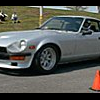
 Subscriber
Subscriber

